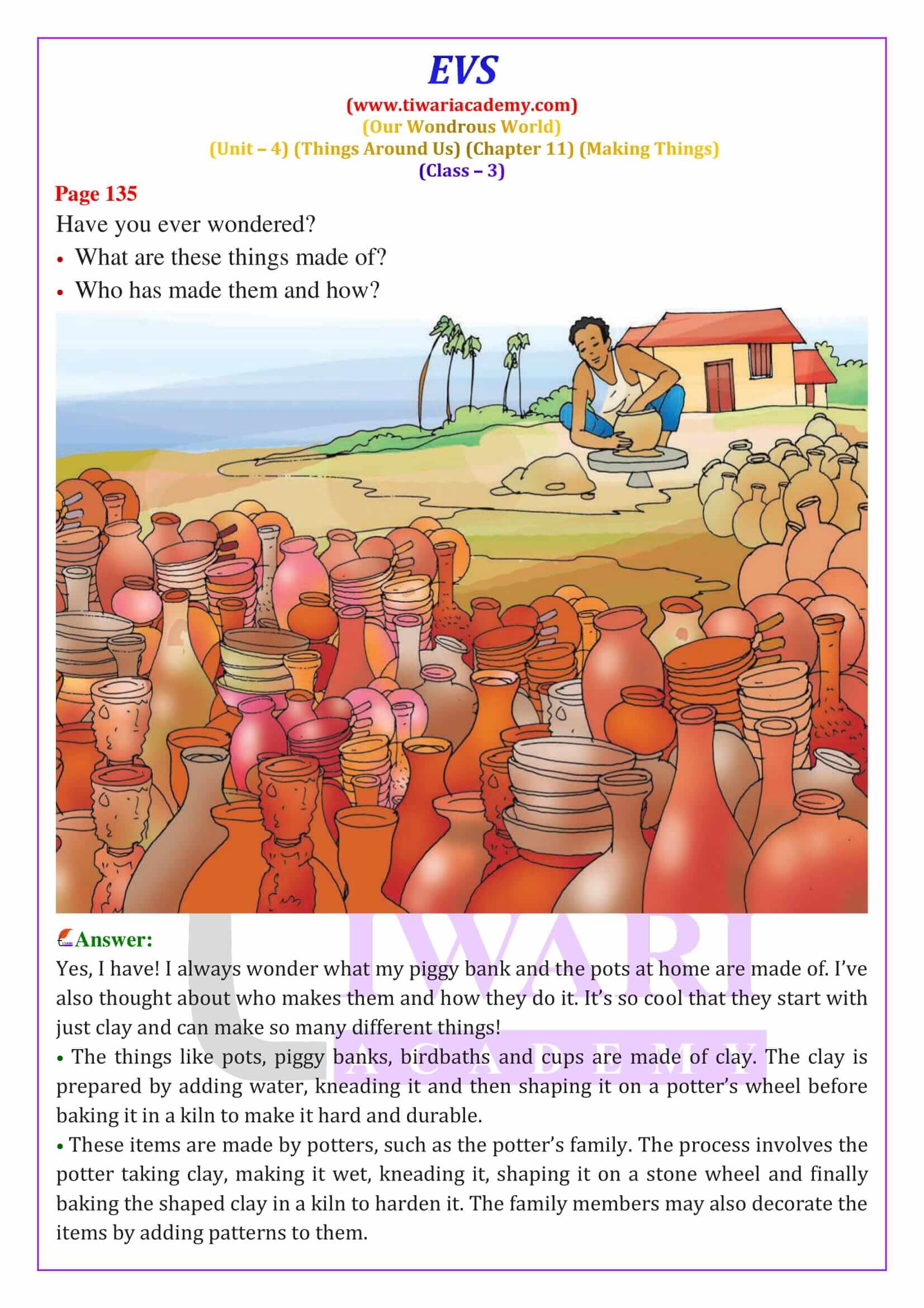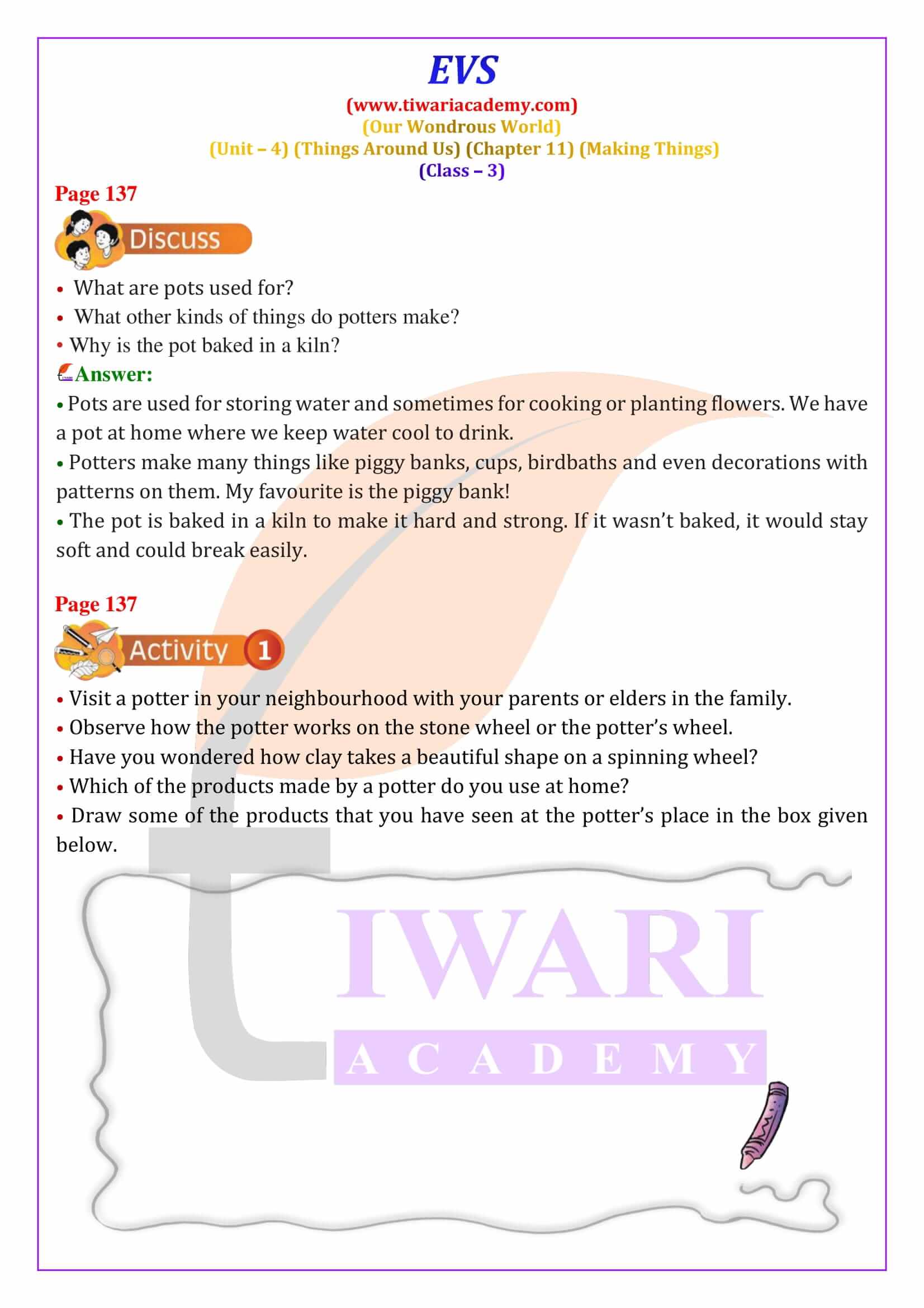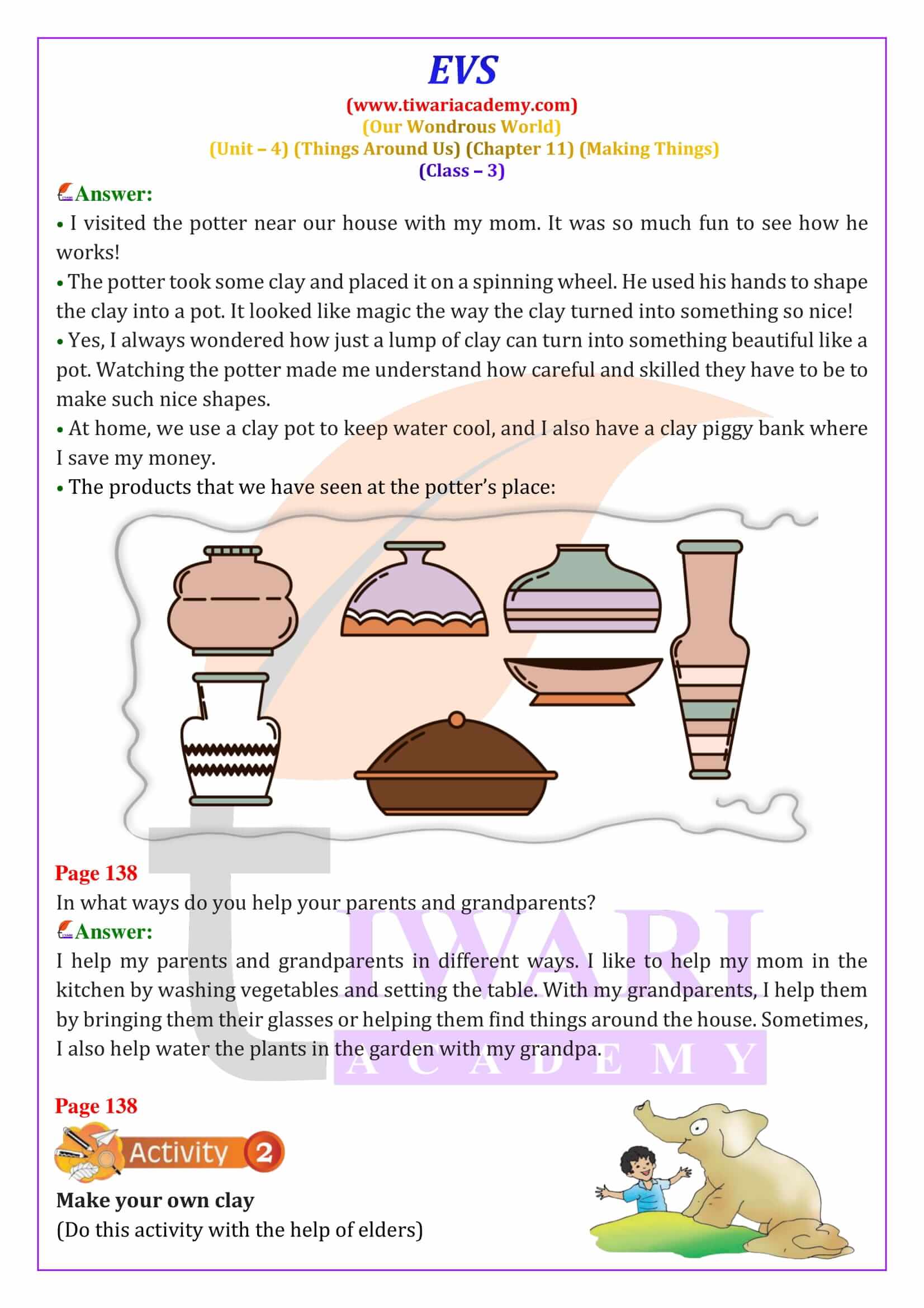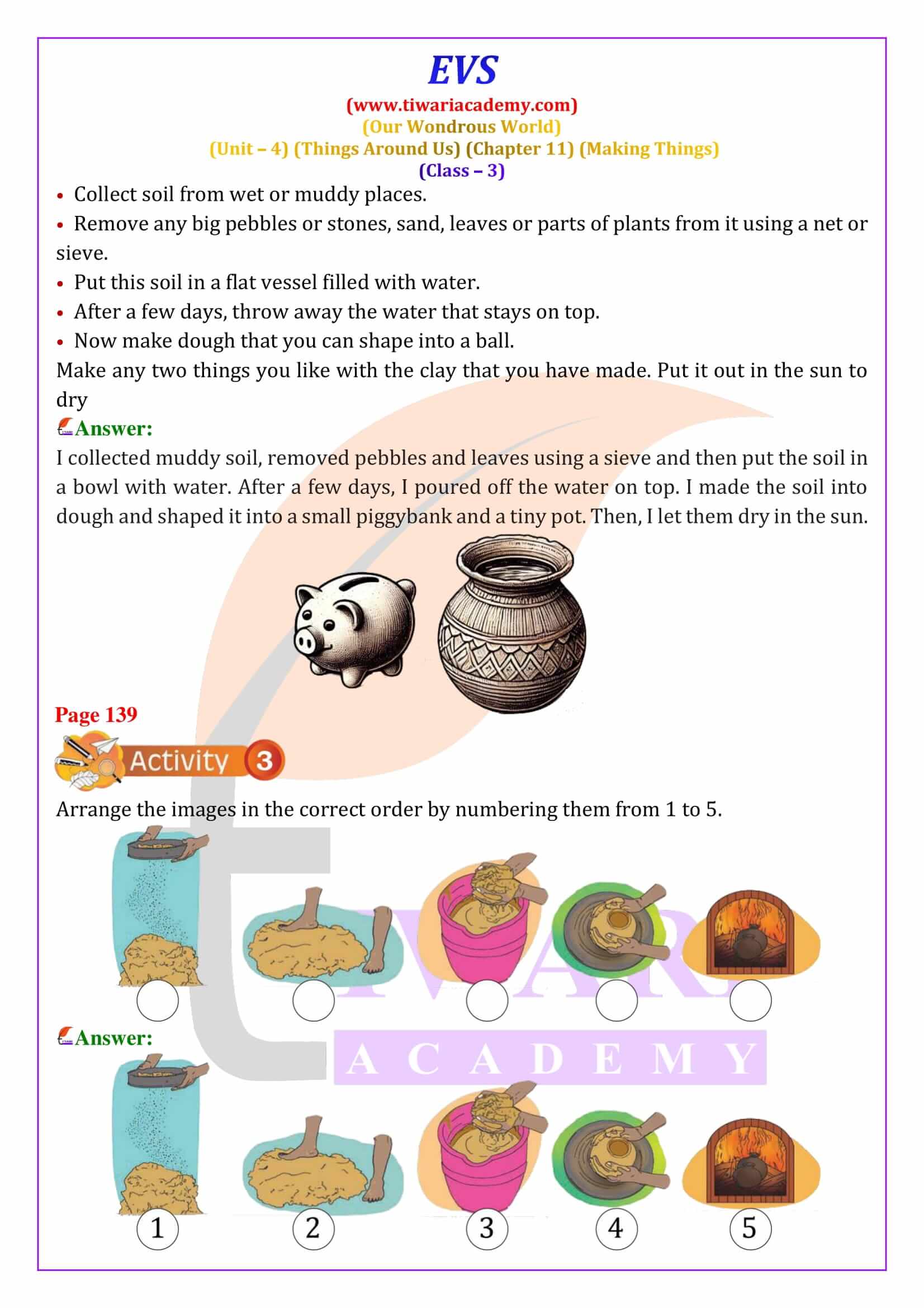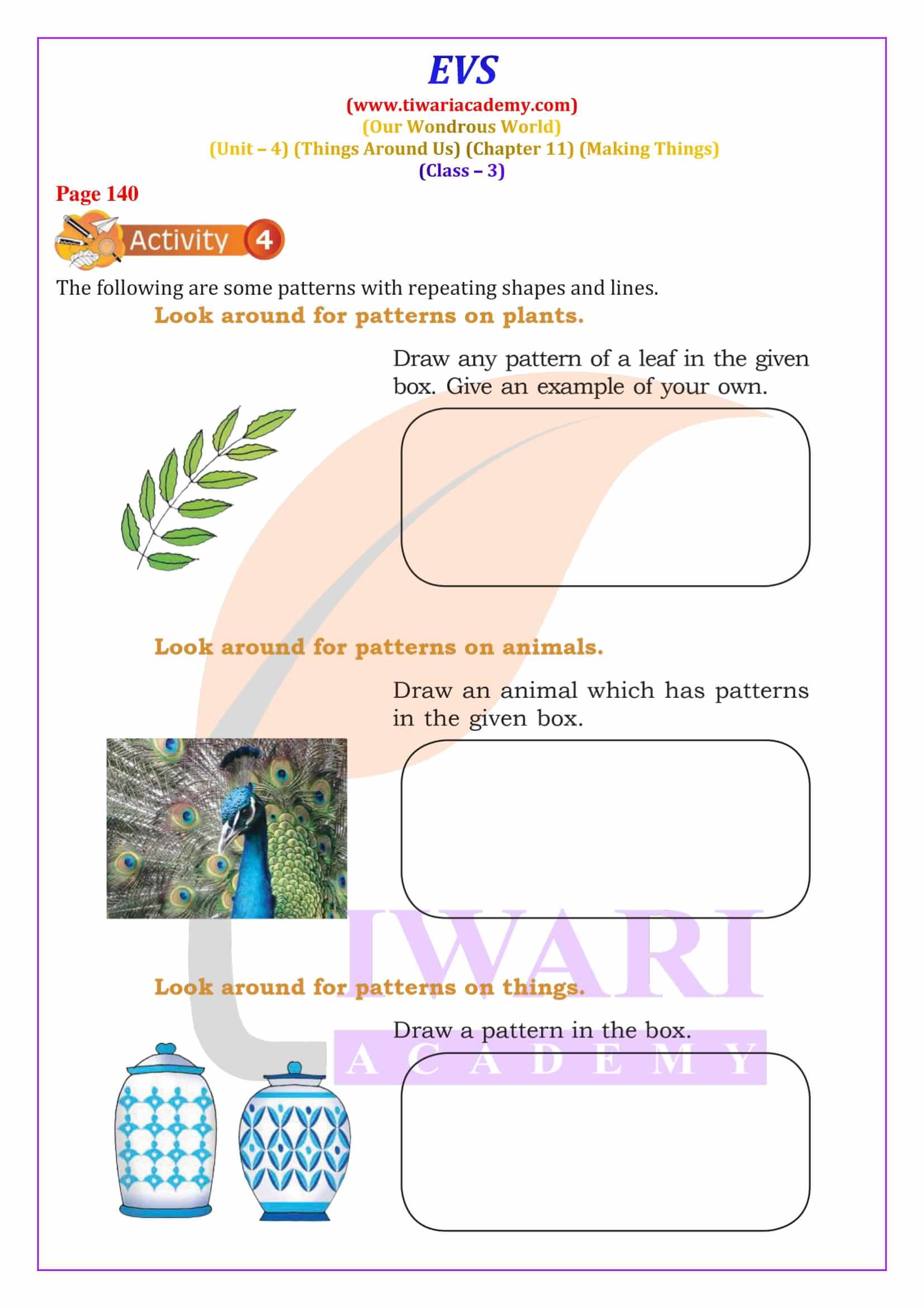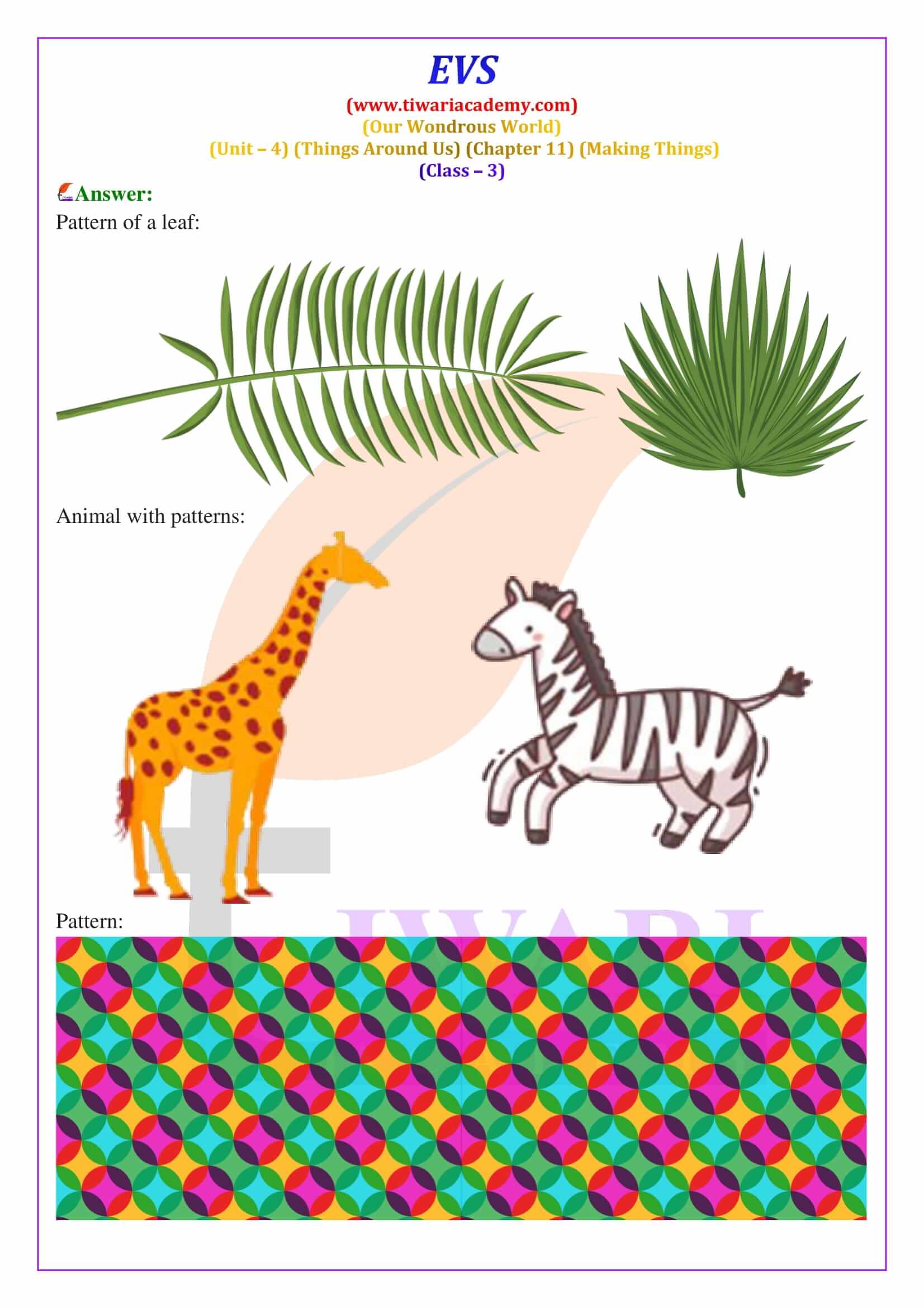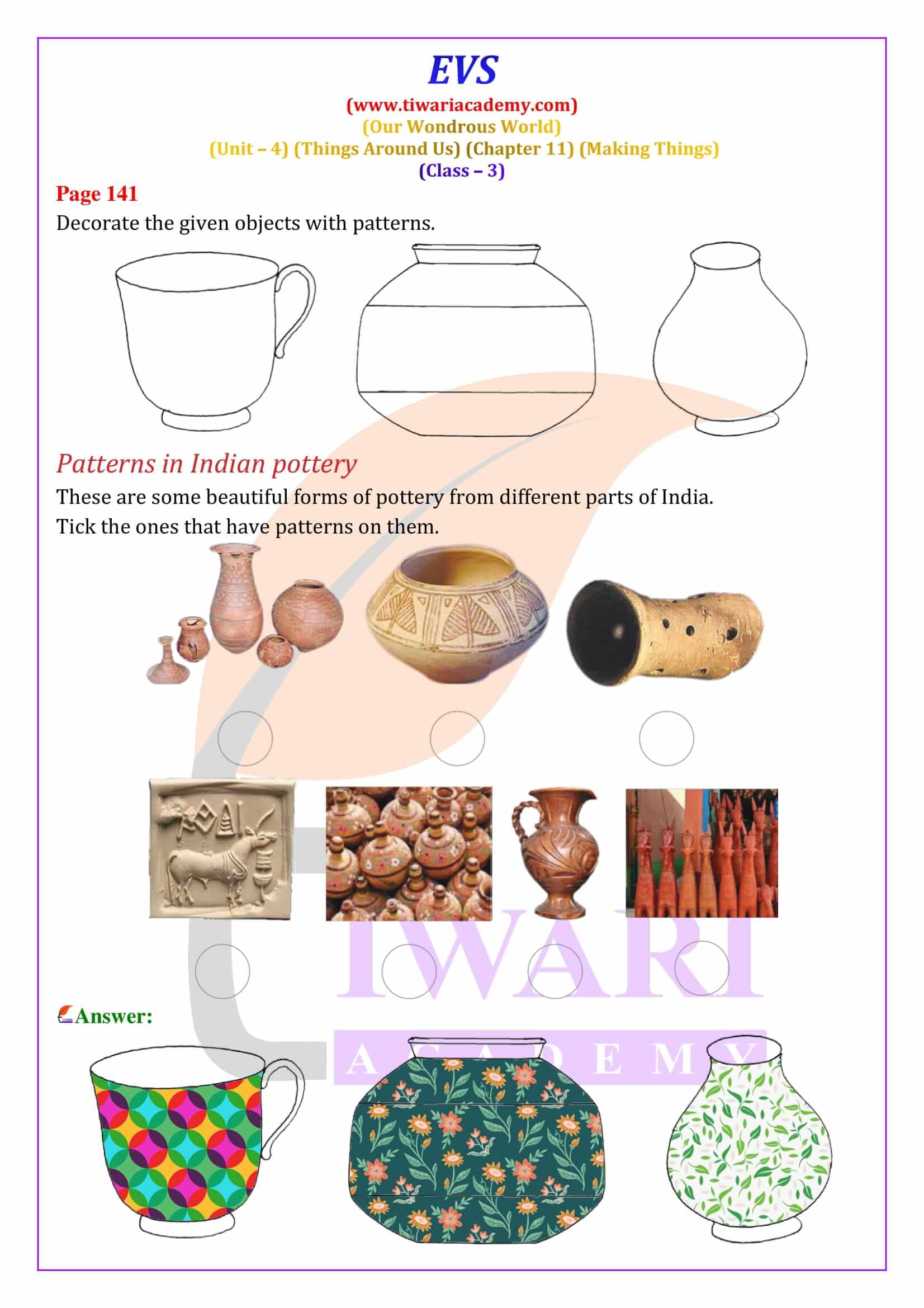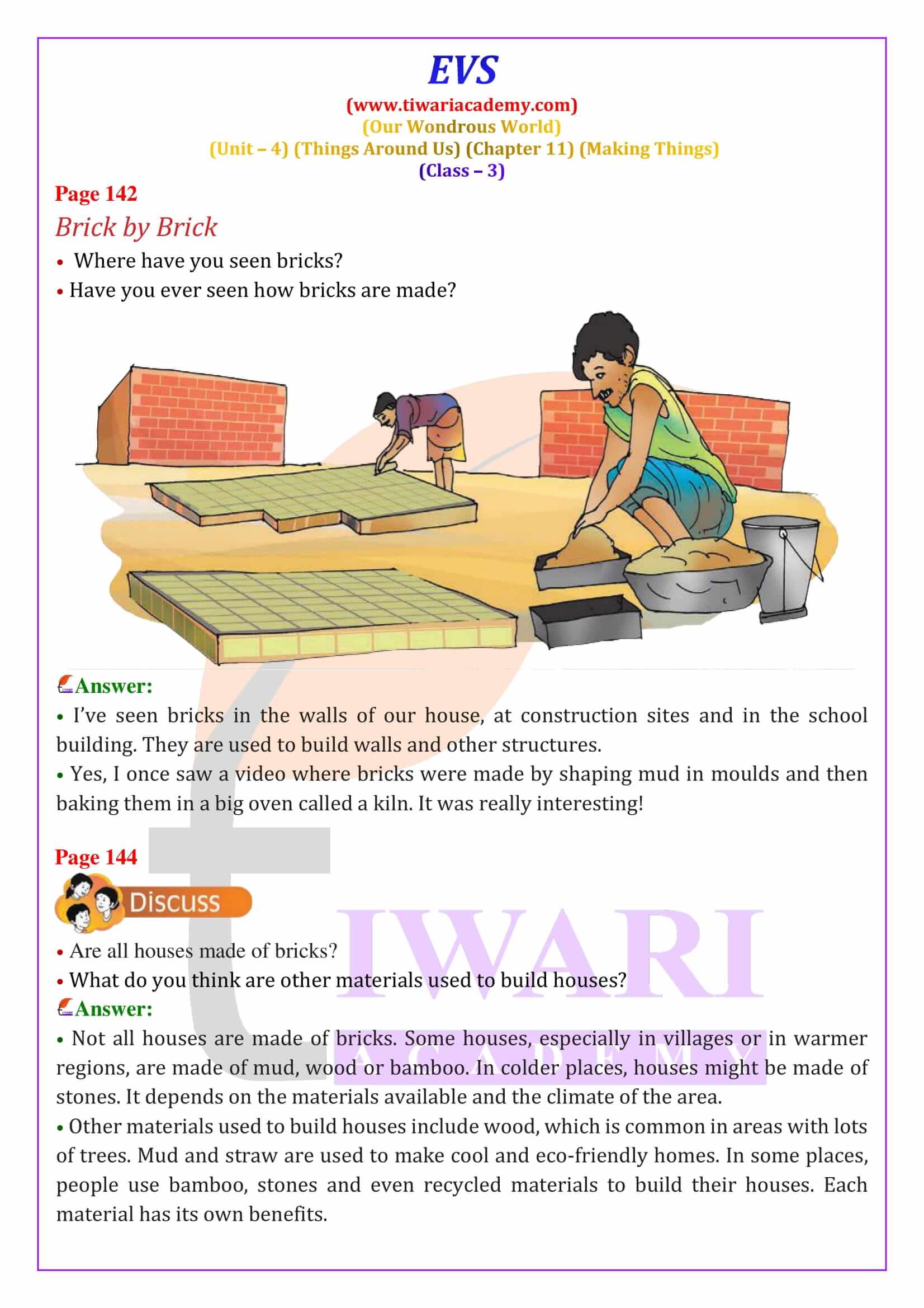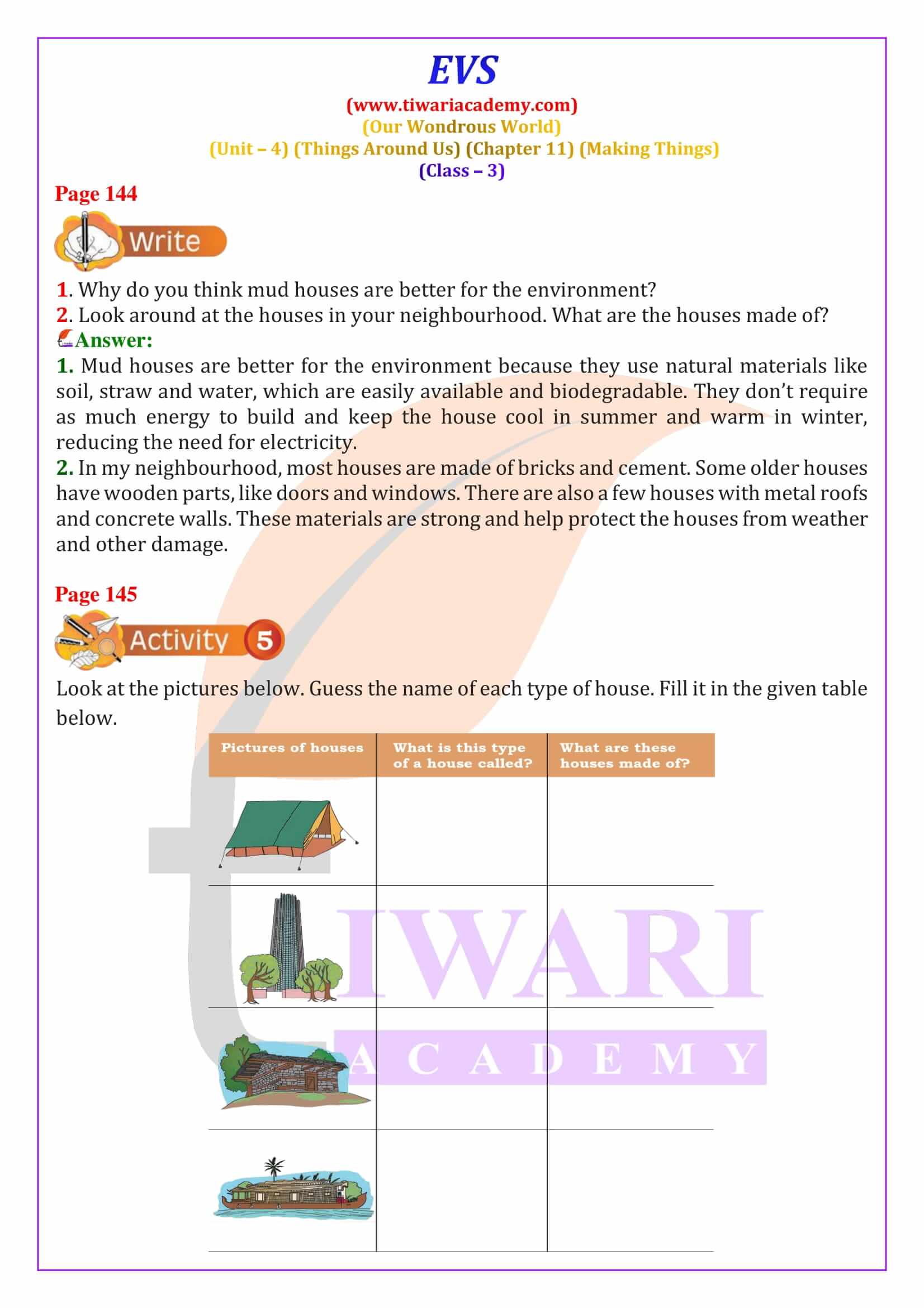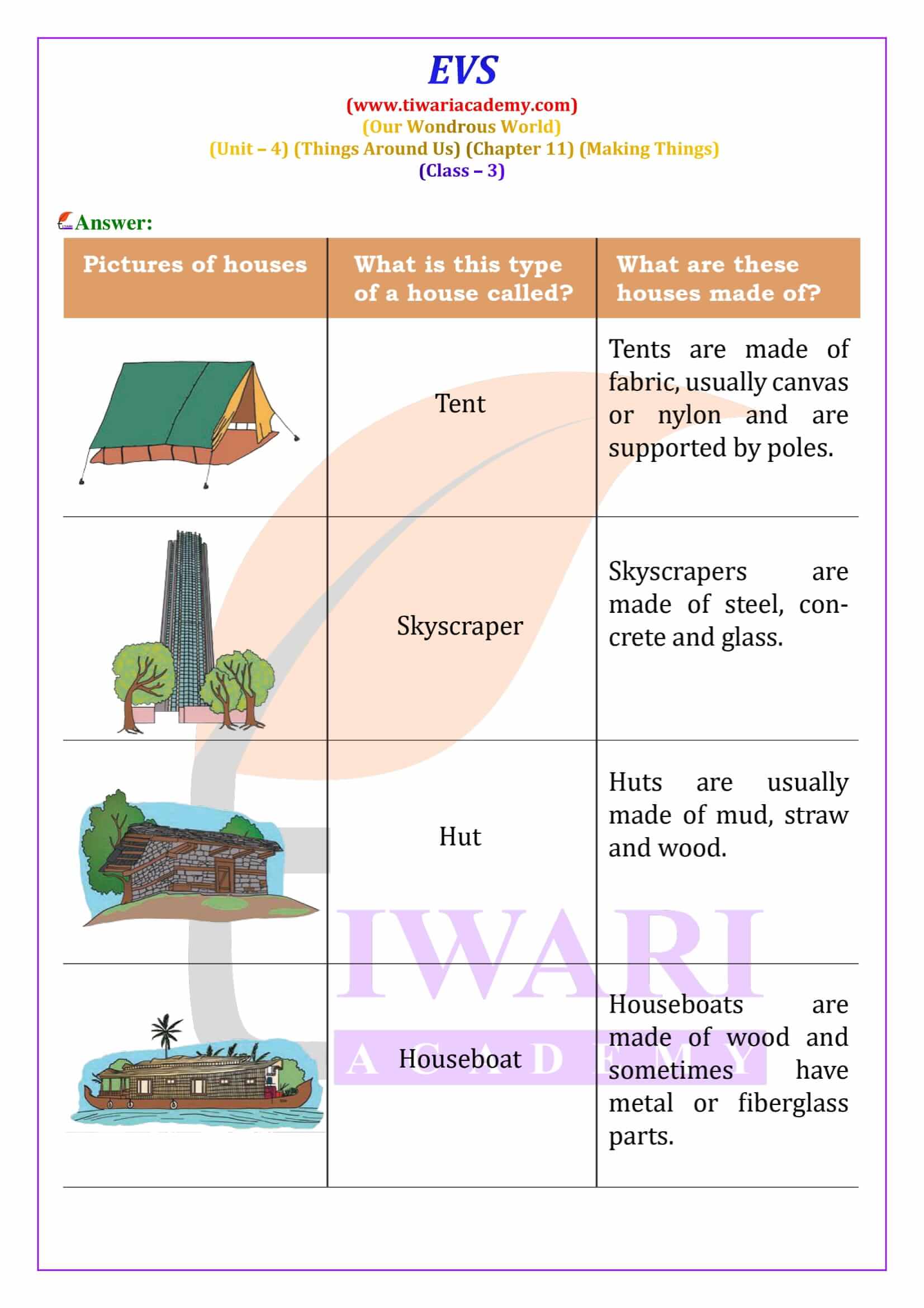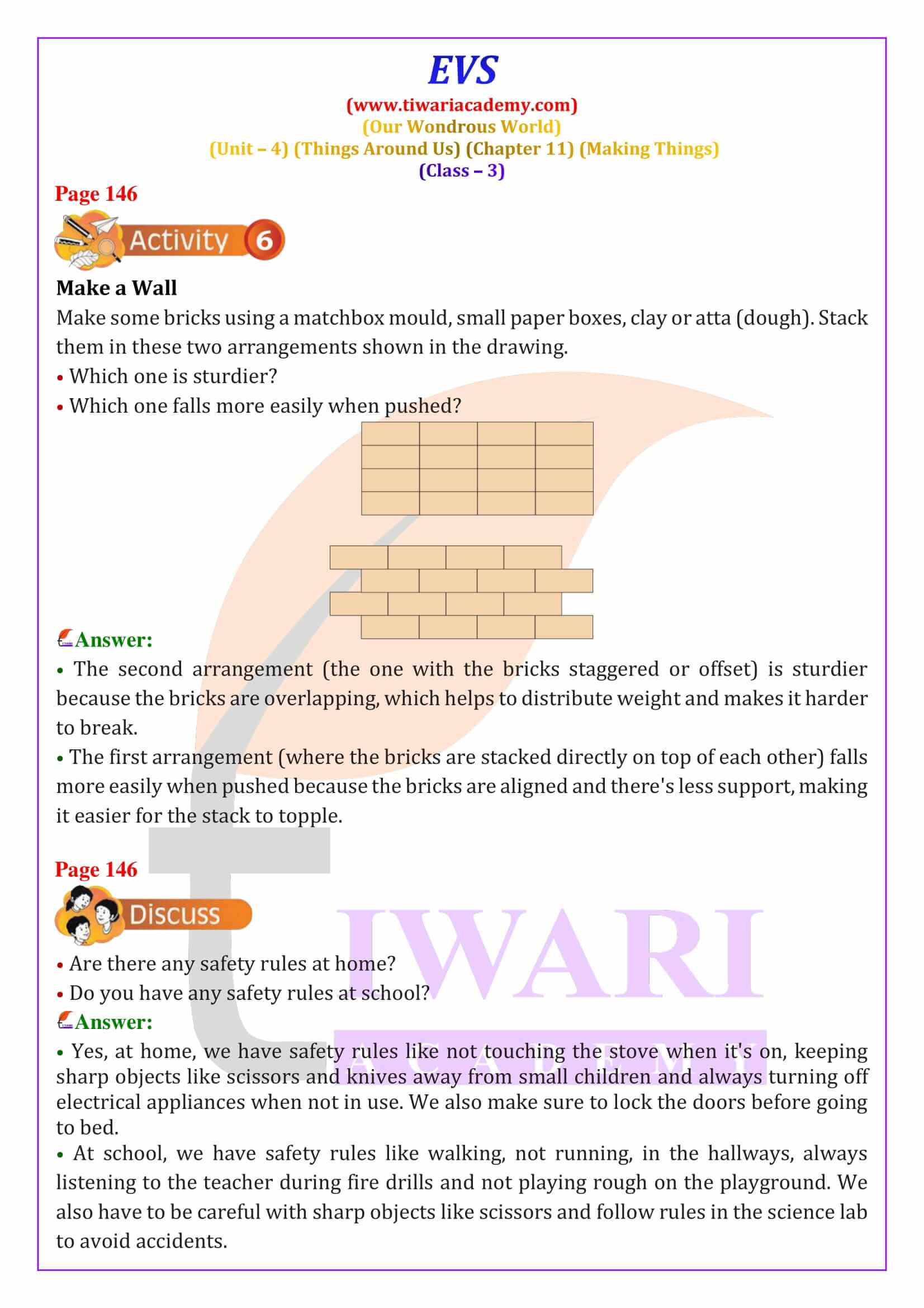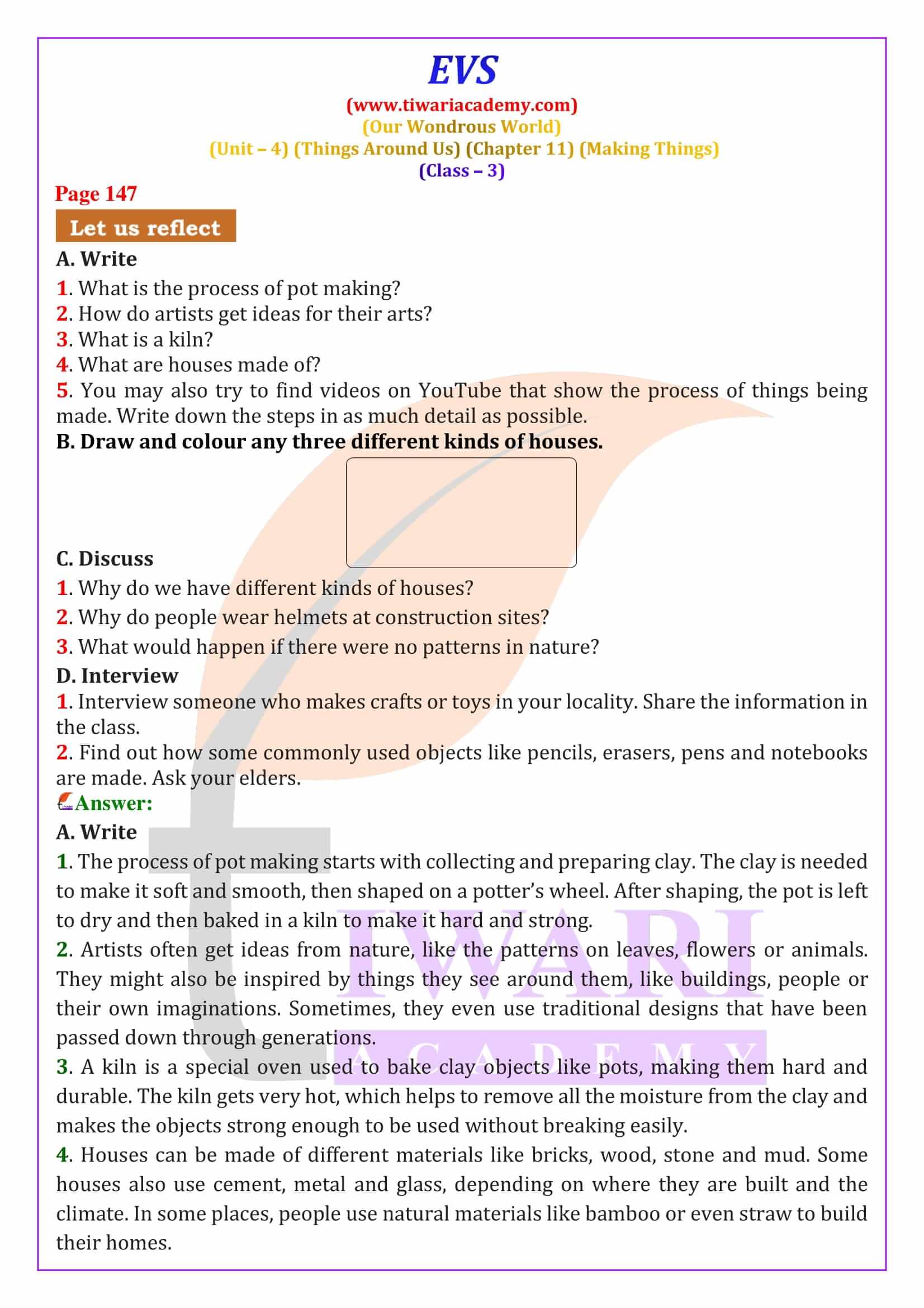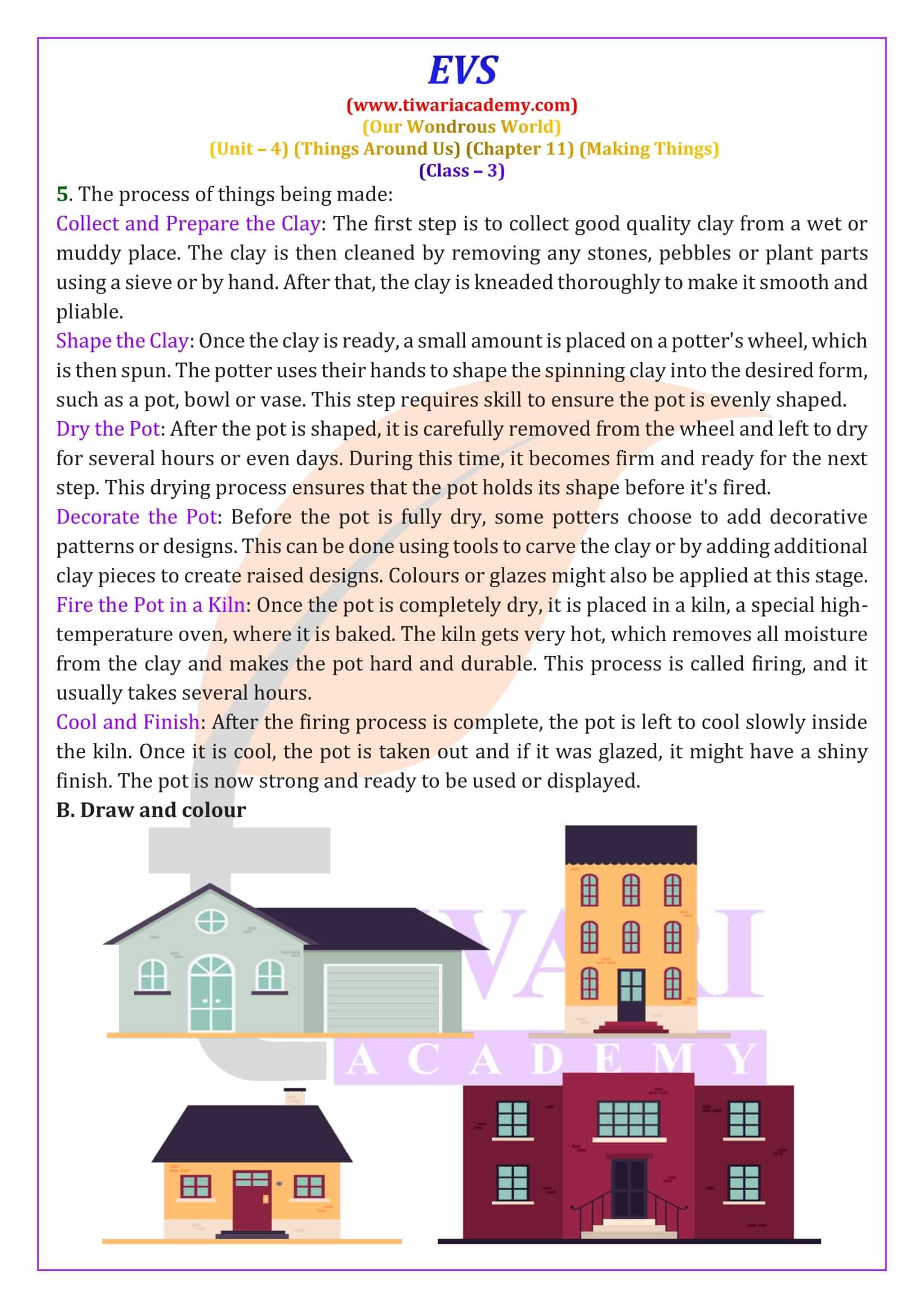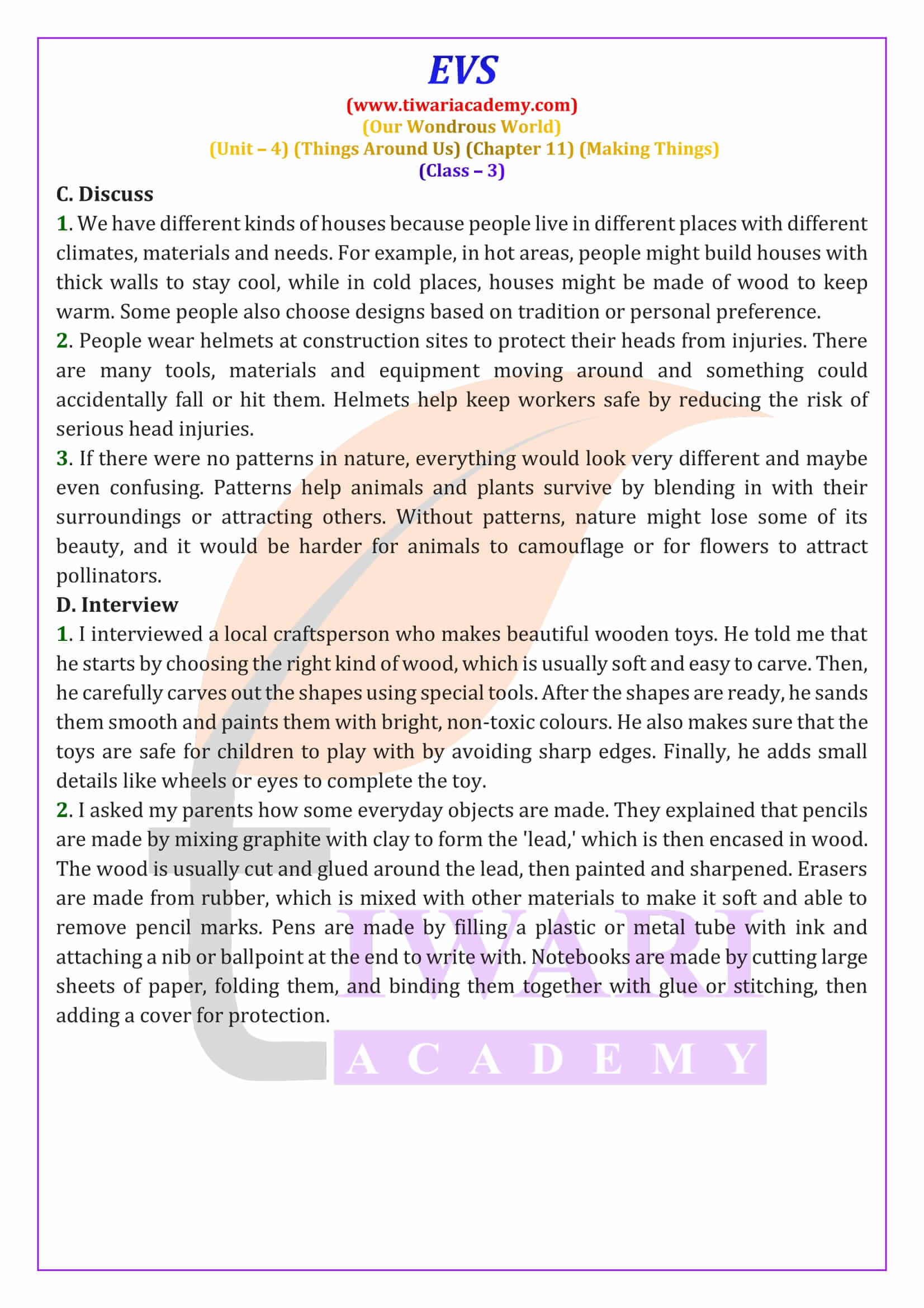NCERT Solutions for Class 3 EVS Chapter 11 Making Things based on new textbook Our Wondrous World, updated for the session 2024-25. It promotes creativity and hands-on learning. Class 3 EVS Chapter 11 teaches students how to create simple items using everyday materials, fostering practical skills, resourcefulness and innovation in young learners.
Class 3 EVS Chapter 11 Making Things Question Answers
Introduction to Chapter 11 Making Things
In Chapter 11 of the Class 3 EVS book Our Wondrous World, we explore the fascinating world of creating useful and beautiful items from clay. Have you ever wondered how everyday objects like pots, piggy banks, and birdbaths are made? This chapter introduces us to the art of pottery and the process of making things with our hands. Pottery is an ancient craft, and through this chapter, we get to see how a simple lump of clay can be transformed into something wonderful and useful.
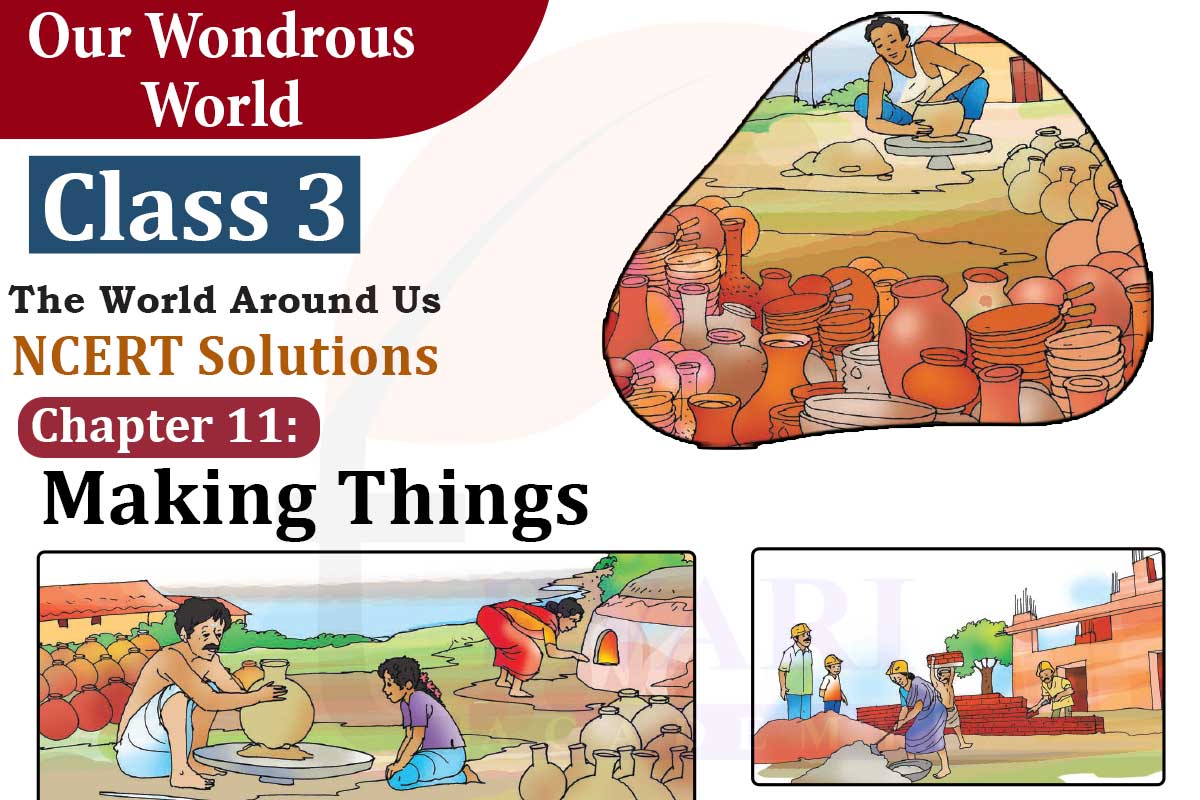
The Potter’s Craft
The chapter begins with a story of Mini and her grandfather, Appooppan, who is a skilled potter. Appooppan carefully selects clay, mixes it with water, and kneads it until it’s just right. Then, he places the clay on a spinning wheel, where it starts to take shape. With gentle hands and patience, he molds the clay into pots and other items. Once the items are shaped, they are dried and then baked in a hot oven called a kiln. This baking process makes the pots strong and ready for use. Mini loves helping her grandfather by making patterns on the pots to make them even more beautiful.
Exploring Patterns
The chapter 11 also encourages students to observe patterns in nature. Patterns can be found everywhere, from the spots on a leopard to the stripes on a squirrel. Artists often draw inspiration from these natural patterns when decorating pottery. Students are guided to look around and identify patterns on leaves, animals, and even everyday objects. This helps them appreciate the beauty in the world around them and understand how these patterns can be used creatively in art and design.
Making Your Own Clay Items
Students are invited to try making their own clay items at home, with the help of an elder. The chapter provides simple instructions on how to collect soil, prepare clay, and shape it into objects. This hands-on activity is not only fun but also helps students understand the process of creating things from raw materials. After shaping their items, they can dry them in the sun, just like real potters do. This activity encourages creativity and helps students develop a deeper appreciation for handmade items.
Understanding Bricks and Construction
The chapter then moves on to explain how bricks are made, which is similar to pottery. Just like pots, bricks are made from mud and are baked in a kiln to become hard and strong. Bricks are essential for building houses, schools and other structures. The story of Rohan, who loves watching buildings being constructed, shows how important bricks are in our everyday lives. Students learn that building something big, like a house, starts with small steps—brick by brick.
Safety and Responsibility
The chapter also emphasizes the importance of safety when making things or building structures. Rohan’s father, who works in construction, always follows safety rules by wearing a helmet, safety vest and sturdy shoes. Students are reminded that safety is important not just at construction sites but also at home and school. By following safety rules, we can prevent accidents and ensure that everyone stays safe while working.
The chapter 11 encourages students to reflect on what they have learned. They are asked to think about the process of making pots, the inspiration for patterns and the different materials used to build houses. There are also fun activities like drawing and discussing different types of houses and interviewing local craftsmen. This helps students connect what they’ve learned in the chapter to the world around them and understand the importance of creativity, hard work, and safety in making things.
For detailed explanations and simplified solutions to all questions in Chapter 11, students can visit the Tiwari Academy website, where everything is well-explained and easy to understand.
